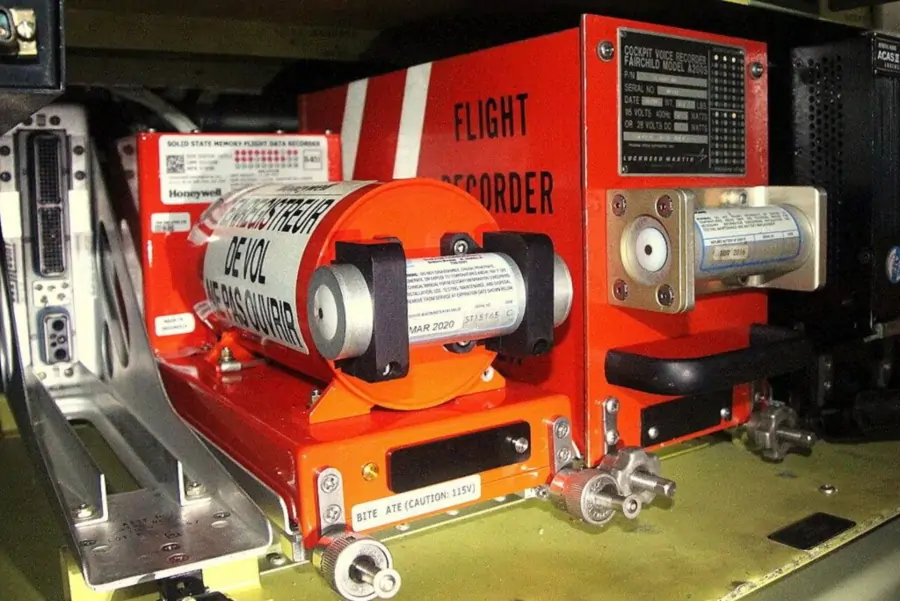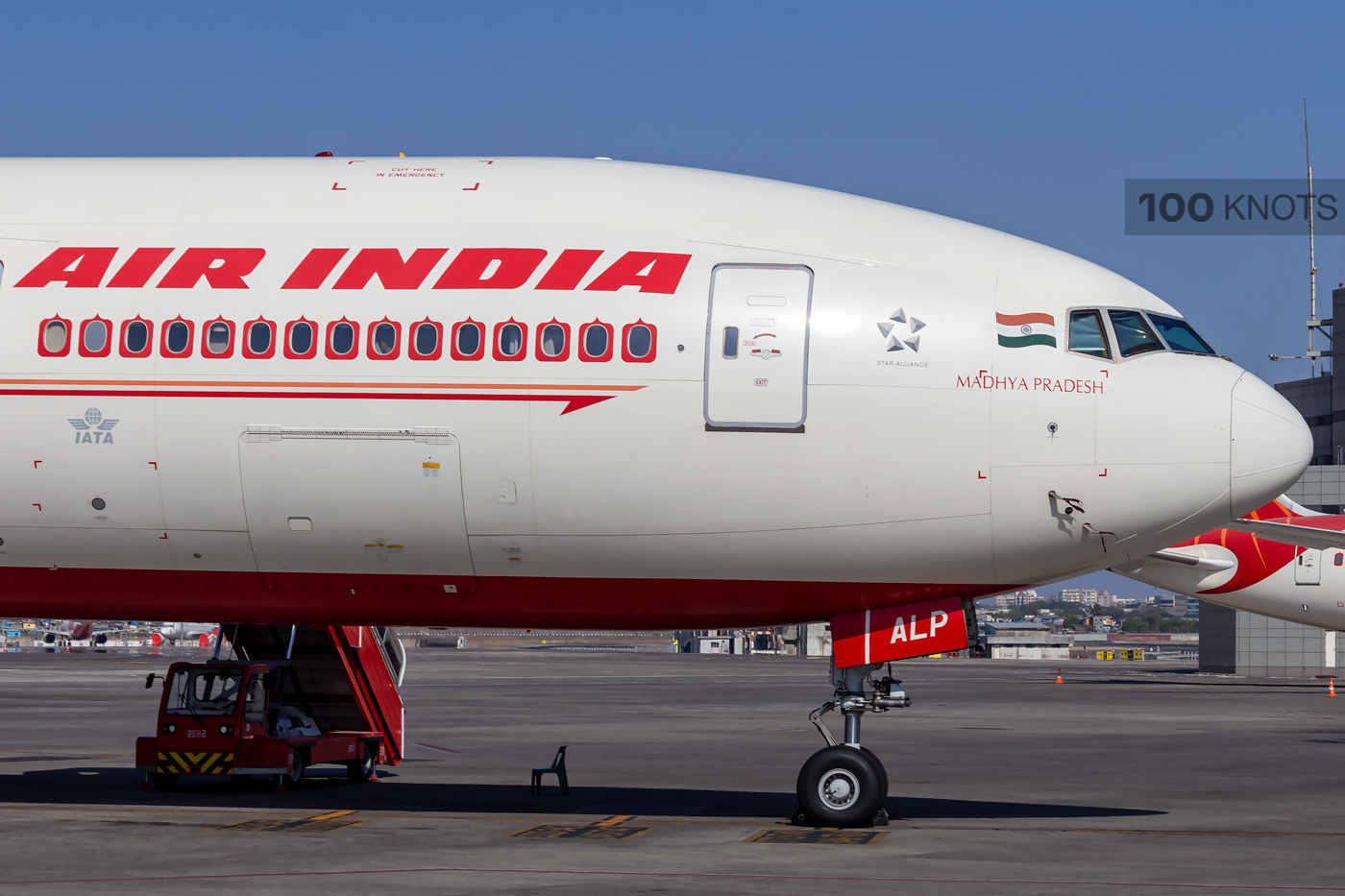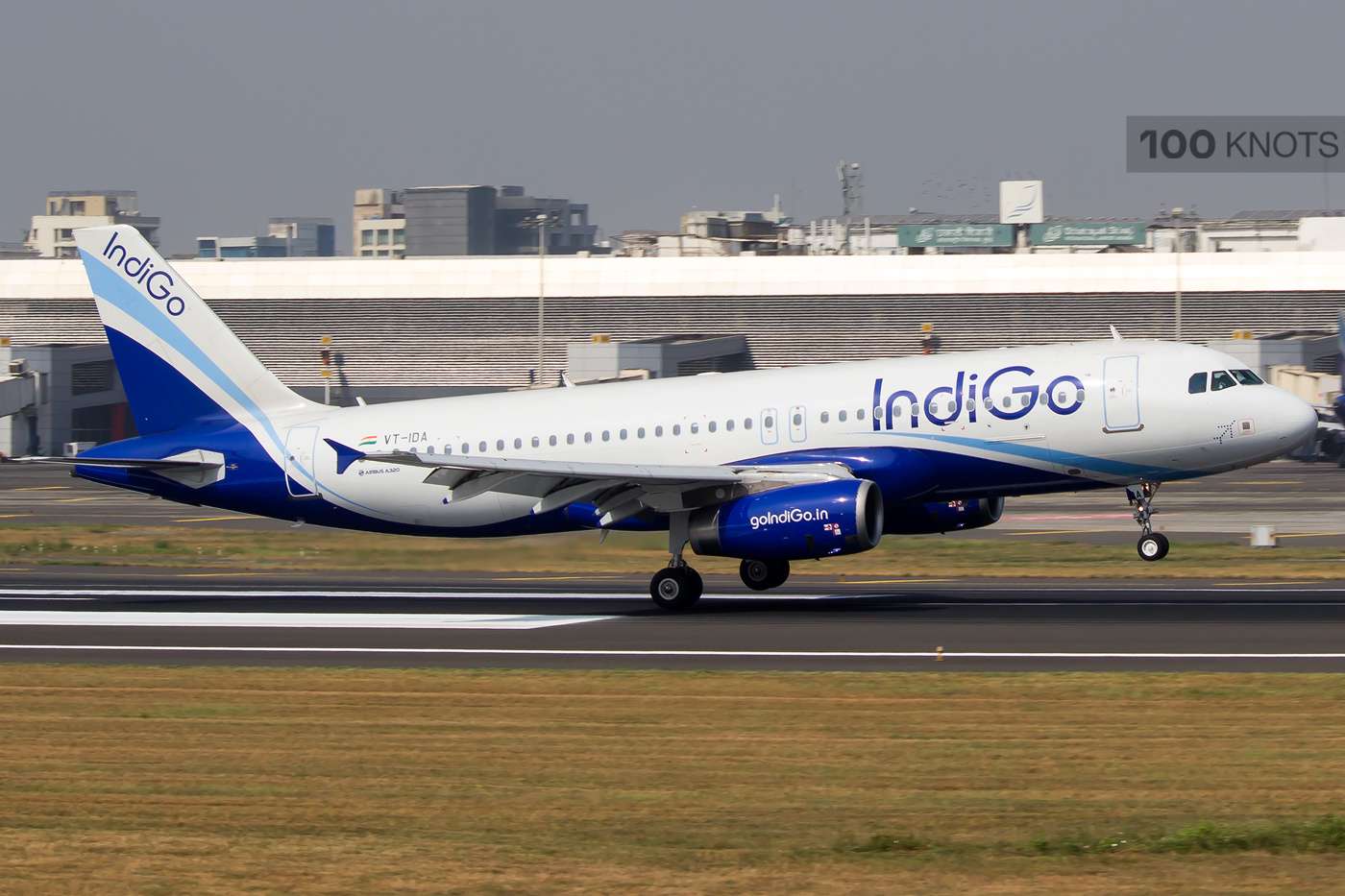The Hindustan Aeronautics Ltd (HAL) said on Thursday, February 18 it has received the Indian Technical Standard Order (ITSO) authorisation from the Directorate General of Civil Aviation for its indigenously developed Cockpit Voice Recorder (CVR) and Flight Data Recorder (FDR).
The ITSO is a minimum performance standard for specified materials, parts, processes, and appliances used on civil aircraft, the Bengaluru-headquartered HAL noted in a statement.
https://twitter.com/HALHQBLR/status/1626093988855042049
CVR and FDR are popularly known as 'black boxes'. However, these recorders are painted orange colour to help in their recovery following an aircraft accident.
CVR and FDR are used to record critical flight parameters and audio environment in a crash-proof memory which is later used for investigation of aircraft incidents or accidents, it was noted.
Black boxes that are resistant to the most extreme situations are one of the most special tools of the aviation research industry with their voice recording features.
A black box is a flight data recorder that must be in every air vehicle. All flight information is recorded in the black box with a specific algorithm. This makes the recorded flight data accessible to authorities when needed. Black boxes that are resistant to the most extreme situations are one of the most special tools of the aviation research industry with their voice recording features.
Although the black box is not a new device, it still operates with the same principle today. The last 2 hours of conversations in the cockpit, together with the data from the last 25 hours of the aircraft, are recorded by this device.
Read next
India's Akasa Air will place a "substantially" large order for new narrowbody jets this year, as the start-up budget airline looks to capitalise on booming demand at home and begin international flights, its chief executive told Reuters. The 200-day-old airline currently flies 17 Boeing 737 MAX planes out of a total order of 72 jets to be delivered by March 2027.
"Before the end of this year we are going to place another aircraft order that is going to be substantially larger than the 72 aircraft order we have placed," Vinay Dube said during an interview without giving a specific number.
The new order will be for narrowbody planes, said Akasa's co-founder, a former chief executive of now-grounded, bankrupt full-service carrier Jet Airways. Dube did not say whether the order would go to Boeing or Airbus, but budget carriers typically prefer to use a single narrowbody type to help control costs.
Akasa Air to place a large order for new narrowbody jets by year end
The order plans come as travel demand in India has seen a sharp rebound post-COVID-19, making it the world's fastest-growing aviation market, with capacity surpassing 2019 levels and passenger numbers inching close.
ALSO READ - From A350s to B777Xs, Air India finalizes the Historic 470 Aircraft deal with Airbus & Boeing
Air India on Tuesday, February 14 placed an order for 470 jets, the largest by a single airline, as it looks to revamp its ageing fleet to capitalise on the travel boom at home while also competing with Gulf rivals like Emirates for international passenger traffic.
Indian airlines are forecast to order 1,500 to 1,700 planes over the next couple of years, according to consultancy CAPA India, including a likely 500 plane order from Akasa rival IndiGo, the country's biggest airline.
In its report, CAPA said the total commercial Indian fleet of around 700 aircraft is smaller than some of the world's largest individual airlines and that given the immense potential that exists, it stands to reason that there is a need to induct more aircraft.
Akasa will add three planes to its fleet within the next three months to reach 20, making it eligible to fly to international destinations as per Indian government rules, Dube said. "By the end of the year, we hope to be flying internationally," he added, with the carrier targeting destinations within the range of a 737 MAX in South Asia, Southeast Asia and the Middle East.
Dube said in the domestic market, Akasa would focus on its strategy of connecting smaller cities with the country's major metros at a time when demand remains strong despite high ticket prices. "Everything is growing gangbusters," he said. "The demand in India as a whole is going to continue to grow and grow and grow."
ALSO READ - Akasa Air acquires 5 brand-new Boeing 737 MAX aircraft from Avolon
Most of Akasa’s current fleet has been acquired on lease. There are 55 more planes to come, with deliveries spread across the next four years. The airline has received an aircraft every two weeks and will have 18 by the end of this month, ahead of its target of 18 planes by March this year.
Akasa has a presence in cities all across India, with a network that includes 14 destinations, namely, Ahmedabad, Bengaluru, Kochi, Chennai, Mumbai, Delhi, Guwahati, Agartala, Pune, Visakhapatnam, Lucknow, Goa, Hyderabad, and Varanasi.
In December, Akasa Air’s market share was 2.3%, and its passenger load factor has been hovering in the 80s. The airline’s next big goal is to start international operations, for which it needs a fleet size of 20 aircraft, which will likely happen later this year.
(With Inputs from Reuters)
Read next
Air India, the flag carrier airline of India, had been facing a multitude of challenges over the years, from mounting debts to stiff competition from private airlines. However, with the recent announcement of its plans to expand its fleet with multiple types of aircraft, Air India is poised to regain its lost glory in the aviation industry.
Air India’s agreement to acquire 470 planes from Airbus and Boeing, the largest deal in aviation history, will help the airline modernize its fleet, expand its network, and boost in its ambition to become “a world-class proposition.
Air India, recently privatized and now owned by the Tata group, will induct 210 Airbus A320/321 Neo planes, 190 Boeing 737 MAX single-aisle aircraft, 40 Airbus A350s, 20 Boeing 787s, and 10 Boeing 777-9s into its fleet.
Having sub-fleet types will make network optimisation easy for the airline. For instance, the ultra-long-haul A350-1000 will also allow the airline to launch direct flights to the West coast from Bengaluru and Mumbai which the airline currently operates with the older ex-Delta 777-200 LR.
Air India’s agreement to acquire 470 planes from Airbus and Boeing, was the largest deal in aviation history.
The Air India team was led by Air India Chief Commercial Officer Nipun Aggarwal, head of aircraft acquisition Yogesh Agarwal and Tata Sons executive Pranay Todi- all investment banking professionals and part of past marquee Tata Sons acquisitions."
"The Air India team was ruthless with negotiations. They pushed aircraft and engine makers asking the right questions even though it was their first aircraft buying negotiation experience."
Said a person involved in the process.
The Airbus order is for 210 narrow-body planes, including 120 A320 Neos and 40 A321 Neos, as well as 40 wide-body A350-1000 and A350-900 aircraft.
The Boeing order includes 190 737 Max aircraft, 20 787-900s and 10 777s with an option to buy an additional 50 737 Max planes and 20 787s. The aircraft will be delivered over eight to 10 years.
The new aircraft will be used to replace the current fleet of 27 787-8s, and 13 777-300 ERs which have been used for the last nine and 13 years.
The 400 narrow-body A320, A321 and 737 Max on the other hand will be used to increase the group’s market share on the domestic routes where it intends to be a close second to current market leader IndiGo.
While 50 Boeing 737 Max will be delivered within 18 months, the A320Neo will start only in 2026. Altogether, Tata Group airlines have a fleet of 220 aircraft, compared with IndiGo which has an active fleet of 308 aircraft and will grow to almost 400 aircraft by then.“
To close the gap with IndiGo, it is necessary to have a substantial aircraft delivery pipeline. Airbus A320 Neos were not available before 2026 while Boeing was ready to supply immediately,” the person quoted above said.
Multiple Aircraft Types, Benefits Air India.
Here are some ways in which multiple types of aircraft will help Air India achieve its goals: Improved connectivity: By adding multiple types of aircraft to its fleet, Air India can expand its reach and connect more cities in India and around the world.
Cost savings: By using different types of aircraft for different routes, Air India can optimize its fleet utilization and reduce operational costs. For example, regional jets are more fuel-efficient and have lower operating costs than larger aircraft. Similarly, wide-body aircraft can carry more passengers and cargo, thereby reducing the cost per seat.
Also read - From A350s to B777Xs, Air India finalizes the Historic 470 Aircraft deal with Airbus & Boeing
Enhanced passenger experience: Air India can cater to the diverse needs of its passengers by using multiple types of aircraft. Air India can provide a personalized and comfortable flying experience to its passengers. Improved safety and reliability: By diversifying its fleet, Air India can minimize the risk of disruption due to maintenance issues or unforeseen circumstances.
Competitive advantage: Air India's decision to add multiple types of aircraft to its fleet will give it a competitive edge over other airlines in the region. By offering a wider range of aircraft, the airline can serve more destinations and attract a diverse range of customers.
Air India's decision to add multiple types of aircraft to its fleet will give it a competitive edge over other airlines in the region.
This will help Air India to stand out in a crowded market and improve its market share. In conclusion, Air India's decision to add multiple types of aircraft to its fleet is a strategic move that will help the airline to achieve its goals of expanding its reach, improving its passenger experience, and reducing costs.
By diversifying its fleet, Air India can also improve its safety and reliability, and gain a competitive advantage over other airlines in the region.
(With Inputs from The Economic Times)
Read next
HAL to manufacture Obstacle Avoidance Systems with HENSOLDT for Indian helicopters
Radhika Bansal
16 Feb 2023
German defence firm HENSOLDT is set to share the full range of critical technologies with state-run aerospace major Hindustan Aeronautics Ltd (HAL) for manufacturing Obstacle Avoidance Systems (OAS) for Indian helicopters.
The OAS is a key piece of equipment that helps in improving the situational awareness of pilots and thereby reduces the possibility of accidents, besides enhancing mission accomplishments, according to aviation experts. The HAL is looking at production of OAS for the Advanced Light Helicopters (ALH), officials said. The indigenously designed and developed ALH is a twin engine, multi-role, multi-mission new generation helicopter in the 5.5 tonne weight class. The HENSOLDT and HAL made the announcement on the collaboration covering design and IPR (Intellectual property Rights) for manufacturing of the Obstacle Avoidance System for Indian helicopters and for potential future exports on the sidelines of Aero India 2023, the German company said. HAL and HENSOLDT also announced a collaboration for joint production of multi-sensor airborne electro-optic gimbals for Indian rotary and unmanned platforms. Officials said HENSOLDT will transfer to HAL 100 per cent critical technologies for the OAS. Helicopter accidents during low level flights have been a matter of concern for both civil and military choppers and pilot assistance through enhanced situational awareness is required for quick reaction, the company said. Obstacles in the flight path or close to it often pose a threat to helicopters. Such obstacles may be power lines, aerial cableways, pylons and towers. The probability of occurrence of such threats increases during low-level flight manoeuvres. HENSOLDT said its system provides smart visual cues to pilots to reduce their workload and thereby increasing flight safety and the certainty of mission effectiveness, particularly in crucial mission phases under adverse visual conditions. Where human eyesight alone is not enough, powerful software processes and combines information from sensors and databases and presents it in visual format, it said. "This collaboration between HAL Korwa and HENSOLDT is first of its kind in Indian Defence Industry with intention of transferring of critical key technology from Germany to India giving boost to 'Atma Nirbhar Bharat' (self-reliant India) in the Indian defence sector," said Apurba Roy, Executive Director of HAL (Korwa facility). "The finalisation of the transfer of technologies including IPR for the equipment is primarily proposed for Advanced Light Helicopters (ALH) and expected to be a major equipment fit in all future upgrade/new helicopter programmes with enhanced features with suitable improvement customisation by HAL Korwa," he said. Andleeb Shadman, MD, HENSOLDT India, said the company is optimistic and dedicated to supporting India's initiative on becoming self-reliant in defence manufacturing. "Our business plans are built on transfer of technology, local production and joint development based industrial collaborations. We believe that our collaboration with HAL for OAS is going to be the pioneering milestone," he said.
Read next
Boeing has submitted details to the Indian Navy for an assessment of the Super Hornets fighter aircraft produced by the company, a senior official of the firm has said. Boeing Defense, Space and Security, India business development head, Alain Garcia told PTI the company has handed over the details and the Indian Navy is also interested in acquiring six more P-8 patrol aircraft.
"Right now, we have submitted all of the information to the Indian Navy, for them to make an assessment. We are just ready and waiting for them to make a decision and an announcement to tell us where that stands," Garcia said at the ongoing Aero India-2023.
ALSO READ - Boeing calls F/A-18 Super Hornet “the best deck-based aircraft” for the Indian Navy
Regarding P-8 aircraft, Garcia said it has been a great platform for the Indian Navy. "They have flown the (P-8) aircraft many hours over the years to a point where it's really benefiting their capability and maritime surveillance in patrol and anti-submarine capabilities," he added.
Indian Navy expresses interest in Boeing F-18 Super Hornet fighter jets
Garcia said along with P-8 aircraft, Boeing can also help with some more Apache helicopters. He pointed out that the Indian Army has acquired six Apaches, and it is waiting for the first six to be delivered. "That first one just rolled out of our assembly production line. We build all the Apache fuselages here in India in Hyderabad with a joint venture with Tata called Tata Boeing Aerospace Limited (TBAL)," the Boeing official added.
Regarding the call for a 'self-reliant India', Garcia said there are a lot of avenues for it. Boeing has the largest facility outside the United States in Bengaluru with over 4,000 engineers, according to him. Apart from Bengaluru, the aviation company has 5,000 more employees in other parts of India. "We are growing our footprint here even more and helping the Indian aerospace industry grow," Garcia said.
Read next
Shobha Gangwal, the wife of IndiGo co-promoter Rakesh Gangwal, will sell shares amounting to a four percent stake in the aviation company via a block deal, CNBC TV-18 reported on February 15, citing sources.
The block deal, as per the report, has been launched for 1.56 crore shares. The total deal size is of Rs 2,930 crore, the source who are privy to the development said.
The maximum discount will be up to 5.6 percent of the current market price, the sources added, further noting that the floor price has been set at Rs 1,875 per share.
Goldman Sachs is the banker assigned to broker the block deal, CNBC TV-18 reported. There will be a 150-day lock-up period post-block deal for the investors, it added.
IndiGo's promoter and promoter group presently hold a total of 71.92 percent stake or 27.72 crore shares in the company, as per the shareholding pattern disclosed with the BSE.
Rakesh Gangwal, along with Rahul Bhatia, had co-founded IndiGo airlines in 2006. In February last year, Gangwal resigned from the board of directors, and had announced that he would gradually reduce his stake in the company.
In September, Gangwal and his wife had offloaded a 2.74 percent stake in InterGlobe Aviation, the parent firm of IndiGo, for Rs 2,005 crore through open market transactions.
The shares of Interglobe Aviation settled at Rs 1,986 apiece at the market closing hours of February 15. The closing price was 2.5 percent lower as against the previous day's close.
The block deal comes days after the company reported a 1,000 percent surge in net profit during the third quarter of fiscal year 2022-23.
The airline's profit came in at Rs 1,422.6 crore in Q3 FY23 as against a profit of Rs 129.8 crore in the year-ago period. Revenue from operations surged 61 percent to Rs 14,932 crore in the third quarter as against Rs 9,294 crore a year ago.





Comment